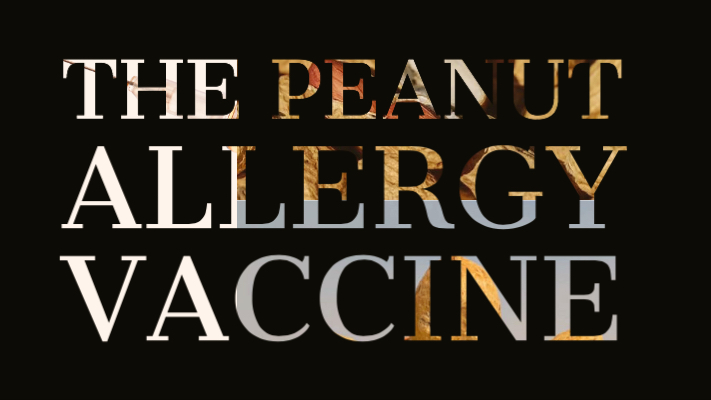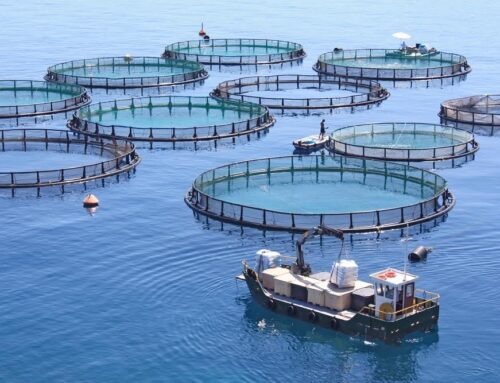 Of all food allergies, those to peanuts are most common.
Of all food allergies, those to peanuts are most common.
It never used to be that way. And no one in the scientific community seems to know why that is.
The Treatments
In 2018, without addressing the cause, the Centers for Disease Control and Prevention (CDC) wanted you to roll up your sleeve to be injected with a new ‘peanut allergy vaccine’ based on research in mice, using immunotherapy to alter the immune system’s response to prevent peanut allergies.
“By redirecting the immune responses, our vaccine not only suppresses the response but prevents the activation of cells that would initiate allergic reactions.” – Jessica O’Konek, Ph.D.
The vaccine concept had been repurposed. While the original vaccine model was designed to trigger the immune system to recognize the invaders and mount an efficient defense the next time the invaders returned, vaccinating against allergens “requires teaching the immune system to ignore these proteins.”
Allergy immunotherapy sounds very similar to allergy shots first introduced in 1911 where small doses of inhaled allergens are given over the course of many years. Allergy shots do not work on food allergens so why reinvent a broken wheel? The ‘original wheel’ (that vaccines attempt to mimic) is Homeopathy, developed in 1796 based on the doctrine of ‘like cures like’. Homeopathy and other holistic modalities trust the body to heal itself if given natural tools.
In 2023, doctors introduced a new desensitization therapy called sublingual immunotherapy, or SLIT. Side effects included a temporary itch in the mouth. Researchers said SLIT was not a cure.
Also in 2023, inspired by the COVID-19 vaccine, the mRNA nanoparticle ”treatment’ for peanut allergies was tested on mice. The mRNA payload to encode the selected peanut protein fragment was the same method used to encode the “spike protein” of the SARS-CoV-2 protein fragment). Mice that were pre-treated showed less of a reaction to peanuts, so say the researchers. With no positive breakthroughs, they expect to move forward with trials and apply the same treatment in many other diseases.
Insanity is doing the same thing over and over again and expecting different results
Demographics and Symptoms
Demographics show that incidents of peanuts allergies in the medical literature began to creep up in the 1990s. A 2017 study showed the prevalence of peanut allergies in the U.S. had increased 21% since 2010. Daycare centers say at least eight percent of children are affected. That’s 1 in 13 children, or about 2 students per classroom, says the CDC.
Symptoms include soaring IgE and atopy [genetic tendency to develop classic allergy diseases, e.g., asthma, rhinitis, dermatitis, food sensitivities, especially in autistic children], hives, rashes, and itching, nausea, stomach pain, diarrhea, and vomiting, tightness of the chest, narrowing of the windpipe and esophagus, wheezing and stuffy or runny sinuses, and death. Anaphylaxis immediately following vaccination had finally become an ‘obstacle’ to the routine jab.
The standard medical protocol, to treat the symptom of a severe peanut attack, uses a shot of epinephrine delivered by Epipen.
“The Peanut Allergy Epidemic: What’s Causing it and How to Stop it,” is a book from 2011. While the attention to this issue has died down over the last decade, the mystery was never solved. Some medical researchers said the epidemic was overstated.
By 2024, an article in the Wall Street Journal blamed Pediatricians… “by recommending that children avoid exposure to peanuts until age 3. They claim they inadvertently turned a rare issue into a major health problem.”
Peanut Oil In Vaccines
 Meanwhile, no medical professional has officially connected the dots between the onset of the peanut allergy epidemic with the onset of refined peanut oil in vaccines.
Meanwhile, no medical professional has officially connected the dots between the onset of the peanut allergy epidemic with the onset of refined peanut oil in vaccines.
Well, some did.
Vaccine makers began adding Peanut Oil as an adjuvant (listed as Adjuvant-65) to vaccines in the late 1960s. Merck was first to patent peanut oil for use in vaccines in 1964. During the 1970s and 1980s peanut oil became a common practice and ingredient in vaccines. Coincidentally, peanut allergies began rising exponentially in children as more vaccines were administered.
At the same time, hospital records indicate anaphylaxis reactions to vaccines and food anaphylaxis in children rose dramatically during this period. It was around this time that medical regulators and health authorities granted GRAS status (Generally Recognized as Safe) to peanut oil in vaccines so that it no longer needed to be listed as an ingredient in vaccines.
Let’s repeat that. According to this article from ThinkingMomsRevolution:
Unfortunately, highly refined peanut oil does not have to be listed on the labels of foodstuffs or injectable medicines in the United States because it has been granted GRAS status — Generally Recognized As Safe.
Selective Memory Syndrome
 In 1913 Charles Richet won the Nobel prize for his research on anaphylaxis when he discovered that any protein injected into the bloodstream of any mammal can cause an allergy to that protein.
In 1913 Charles Richet won the Nobel prize for his research on anaphylaxis when he discovered that any protein injected into the bloodstream of any mammal can cause an allergy to that protein.
However, because of its availability and low cost, peanut oil remains one of the top favored emulsifiers used in vaccines. Who can recall a study from 1913, anyway?
But peanuts are only the beginning of the Allergy Story. Vaccines now contain egg protein, (MMR); soy protein (Prevnar); Brewer’s yeast (Hep B); and casein protein, among many other known and unknown contaminants, now including metals, graphene hydrogels, and nano-machines. When injected, these foreign protein antigens trigger multiple immune responses, especially in the presence of the aluminum adjuvant.
Additives injected in blood go on to create a rise in chronic inflammatory diseases. For instance, patients with IBS have antibodies (markers) to Saccharomyces cerevisae, which is Brewer’s yeast. And we wonder why wheat (glyphosate), casein, and soy allergies are all on the rise?
From The Peanut Gallery
 Highly refined peanut oil is exempt as a food allergen under the FDA, the Food Allergen Labeling and Consumer Protection Act of 2004, and the Federal Food, Drug, and Cosmetic Act.
Highly refined peanut oil is exempt as a food allergen under the FDA, the Food Allergen Labeling and Consumer Protection Act of 2004, and the Federal Food, Drug, and Cosmetic Act.
However, these Acts address allergens as foods that are ingested. The FDA does not address the significance of peanut oil when injected. Neither does the CDC.
As usual, there is no informed-consent, so people are unaware of the potential dangers they accept when consenting to vaccination. The CDC “peanut gallery” has truly gone nuts by ignoring the difference between the verbs: ingested and injected. We only have to look at the damage from the injected squalene adjuvant (MF-59) oil emulsion to see chronic inflammation. While squalene can be ingested safely, it should absolutely not be injected.
The squalene adjuvant is an oil-in-water emulsion once used exclusively in flu vaccines in the elderly. These class of adjuvants are comprised of phospholipids, which make up the membrane of every cell. Squalene opens the blood-brain barrier to vaccine contaminants and causes an antibody response against naturally occurring squalene oil found in the brain and nervous system tissue. It has been linked to autoimmune conditions and Gulf War Syndrome.
Just How Do Vaccines Prevent Allergies?

Vaccines were marketed to prevent “infectious diseases” from spreading— from small pox to measles to Rubella, and others. As we see from numerous outbreaks of these diseases in highly vaccinated populations, that was never true.
Studies show vaccinated individuals spread infectious diseases (measles, mumps, whooping cough, Flu) through vaccine shedding (see package inserts) when new variants are created as artifacts of the vaccine, including the COVID-19 vaccine. Just wait a year and the ‘variant-adapted COVID-19 vaccine‘ is ready for release.
Since the National Childhood Vaccine Injury Act of 1986 was signed into law by President Ronald Reagan, vaccine makers are immune from vaccine injury claims.
Since pharmaceutical companies are granted indemnity, the industry has the green light from governments to turn every drug into a vaccine, which today means strictly mRNA gene technology.
Peanut Allergy Reversal
In 2017, the Murdoch Children’s Research Institute carried out a trail that ended in 2013 that examined two groups of children. The treatment consisted of a combination of probiotics with peanut oral immunotherapy (PPOIT). After the 18-month trial, the patients tolerated peanuts symptom-free 5 years later.
When we support the body with probiotic foods that support our beneficial gut bacteria, we help the body help itself.
Allergic reactions can prove fatal if not taken seriously. Eighty percent of children who are diagnosed with peanuts allergies will keep or retain that peanut allergy into adulthood. Yet probiotic foods and natural, holistic modalities can change the environment of the body to heal the gut, and reverse the problem.
If we are serious about reversing and preventing food allergies and chronic disease, perhaps we should stop allowing the CDC to call the shots. We do not need to “teach” our immune systems to “ignore these proteins” if we refuse to inject them in the first place.
We only need to learn from our mistakes.
Related articles:







